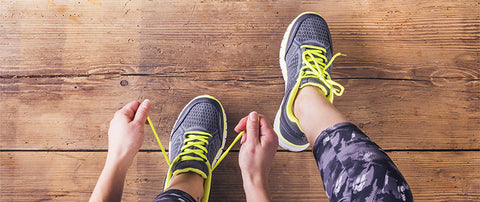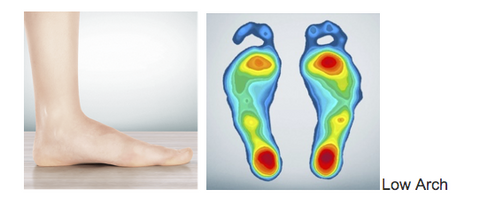SUPPORT FOR SOLDIERS WHO CARRY HEAVY LOADS

| May is Military Appreciation Month and May 16th is National Armed Forces Day. SelectFlex dedicates this Blog Article to all active and retired military personnel who have protected us and made our country great. |
PROBLEM – Soldier Injuries Caused by Carrying Excessive Rucksack Loads When Soldiers and other Service Members are deployed, they not only risk injury and death from combat, but are also exposed to a range of other health threats that may have a negative impact on the mission performance and readiness. (WRAIR: Soldier Health) |
Soldiers and Marines in Iraq and Afghanistan routinely carry between 60 and 100 pounds of gear including body armor, weapons and batteries. The heavy loads shouldered over months of duty contribute to the chronic pain soldiers suffer. Muscle strain is a short-term condition that has always been prevalent among soldiers but, after years of war, the number of acute injuries that have progressed to the level of chronic pain has grown significantly. (NPR: The Weight of War)
A regular rucksack may look similar to a tactical rucksack but they serve two very distinct purposes. The daily rucksack may carry anything from 50 pounds of rocks on a hike to clothes and camping equipment for survival training drills. On the other extreme, tactical backpacks used in combat or simulation exercises average roughly 100 pounds and can get as heavy as 175 pounds. Because the excessive weight compresses or stretches the nerves to the arm, backpack palsy is an increasing problem among military soldiers, who report numbness, weakness, and even paralysis.
Soldiers Foot Related Over-Use Problems Decrease Combat Readiness
- 80% of soldier’s feet roll inward or pronate, creating painful misalignment and overuse injuries overtime, exacerbated by Rucksack loading.
- Varying and excessive pack-weight loads cause substantial pain and impair function, reducing mobility and survivability while in combat1.
- Load related injuries and chronic conditions of the lower extremities (feet /ankles / lower back) hinder mission effectiveness for recruits during basic training and soldiers in infantry units.
- Supporting Variable Rucksack loads puts enormous strain on the arch of the foot and plantar fascia tendon group, that must unload and absorb compressive pack-weight loads, negatively affecting gait and diminishing mission readiness.
- Acute and chronic injuries to feet, knees, hips and lower back occur due to the imbalance and misalignment of the musculoskeletal structure, when the foot arch fails to support lower extremities, especially under excessive load.
|
OBJECTIVE – Reduce Long Term Injuries and Increase Combat Readiness
There is an African proverb that states, “It takes a village ...” This maxim also holds true for the holistic approach required for soldiers who are ready, lethal and able to meet the Army’s needs. (AUSA – Health Soldier, Ready Soldier) |
 |
There is an African proverb that states, “It takes a village ...” This maxim also holds true for the holistic approach required for soldiers who are ready, lethal and able to meet the Army’s needs. (AUSA – Health Soldier, Ready Soldier)
Soldier’s feet and lower extremities endure significant hardship due to excessive pack weight carried in the field. Alliance Design & Development Group (ADDG), the designers of SelectFlex, have undertaken the challenge of building a Military-grade insole to support the unique requirements of soldiers. Our patented Variable Resistance Beam (VRB) technology provides selectable levels of suspension to augment and support natural body movement, particularly under load.
The SelectFlex Military version will maintain up to 25 pounds per step, or up to 50,000 pounds per mile of vertical lifting arch support. To put that into perspective, our SelectFlex retail insole provides 3 selectable support settings, with a range of 11 to 17 pounds per step, or 20,000 to 30,0000 pounds of arch lifting support per mile. For the average person, this amount of arch support surpasses the needs of the daily grind of civilian life.
The strain and stress of extreme loads can cause acute and chronic foot injuries, which ultimately leads to diminished combat readiness. Promoting proper pronation and arch deformation control improves balance, ankle stability, and proprioception in the lower extremities under load, regardless of terrain, environment or variable pack weights.
The SelectFlex Military-grade insole will be the only fully adjustable, customizable on demand in-field, all terrain orthotic that’s built for soldier’s boots. They will preserve energy consumption, optimize effectiveness, and help keep warriors in the highest state of readiness.
SOLUTION – Protecting Soldier’s Feet Under Heavy Pack Weight Load
SelectFlex is engineered to provide adjustable dynamic support to meet the variable compressive pack weight load demands on the foot arch of the modern soldier, where the vast majority of injuries originate. It can also provide the warfighter selectable suspension technology to customize and dynamically correct imbalances of the foot and ankle on the move in theater.
The SelectFlex arch suspension system for civilian retail is currently marketed as the PowerLift Arch™, but the same principal applies to military use. Studies have shown that SelectFlex delivers up to 52% increased arch support to help protect feet under heavy pack weight loads. Additional insole benefits for personnel include:
- Lifts the foot into correct comforting alignment with 3 Selectable Arch Deformation Control Settings providing continuous, Anti-Pronating, Dynamic Alignment and Energy Return to the lower extremities under load
- Allows for dynamic proportional support to the variable loads placed upon the foot arch throughout the entire gait cycle, custom conforming to each unique arch shape
- Reduces pronation, aversion and knee deviation under load
- Improves balance and proprioception in the lower extremities
- Provides optimal mobility by improving gait under load
ADDG is looking forward to introducing its military version of SelectFlex, which will provide soldiers with dynamic arch support to help relieve the pressures of variable compressive pack weights and alleviate over-use injuries. Our mission is to support our soldiers and keep them battlefield ready.
- Dean C. The Modern Warrior’s Combat Load, Washington D.C. Department of the Army, Army Center for Lessons Learned, 2003
- George SZ Childs JD, Teyhen DS, et al. Rationale, design and protocol for the prevention of low back pain in the military (POLM) trial (NCT00373009) BMC Musculoskeletal, 2007)
- Quinnipiac Motion Analysis Lab Study Phase 1 completed in Jan 2020











